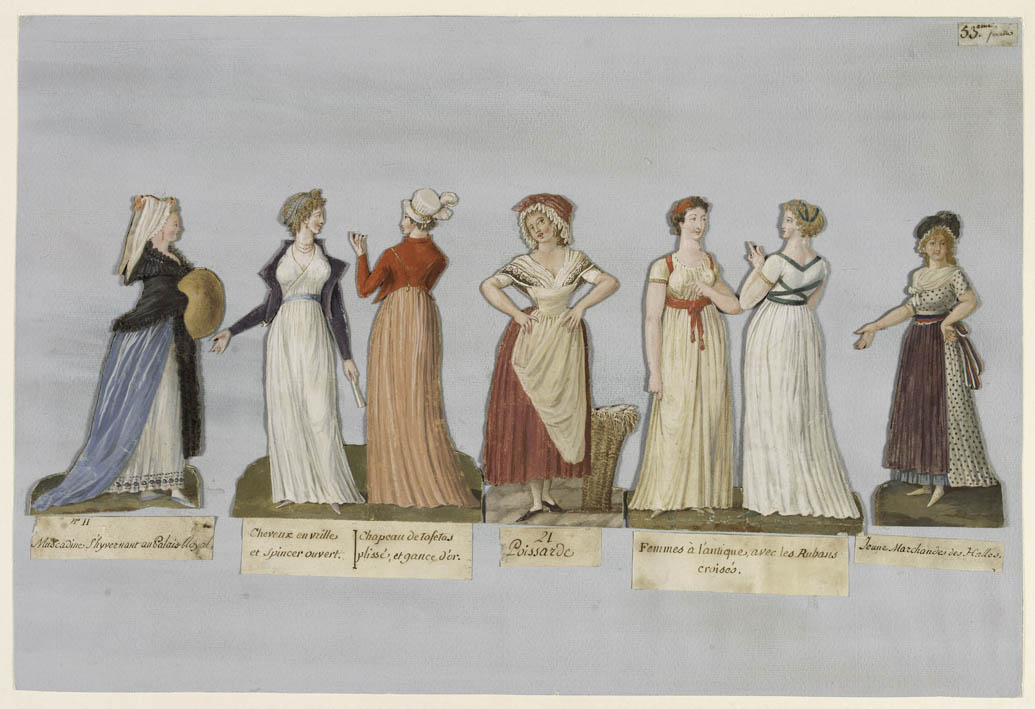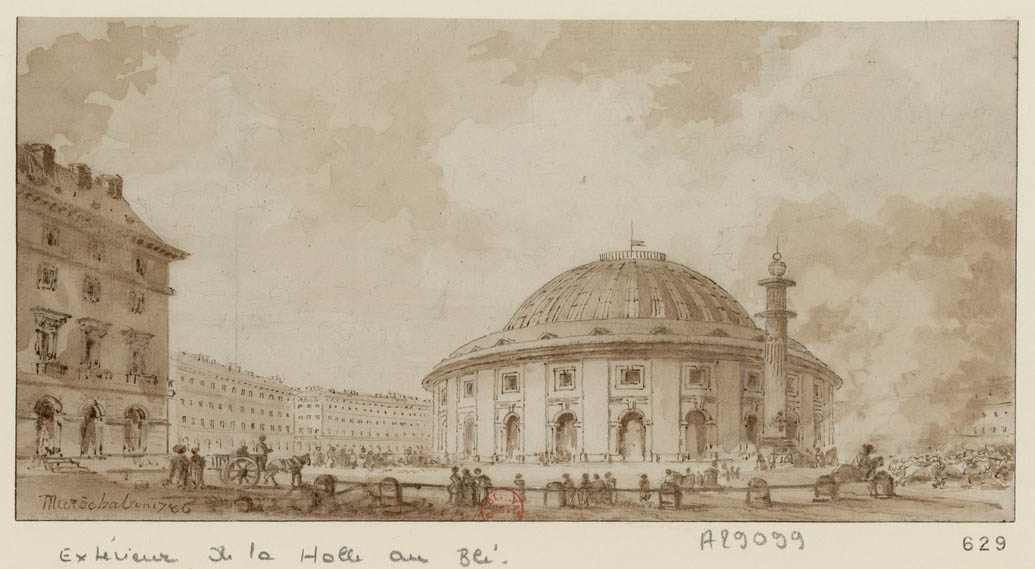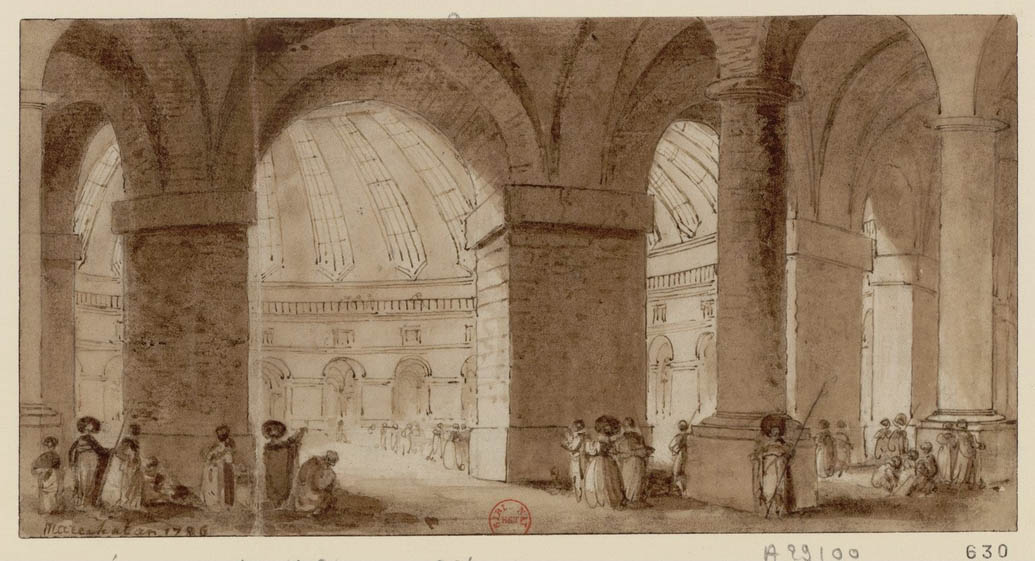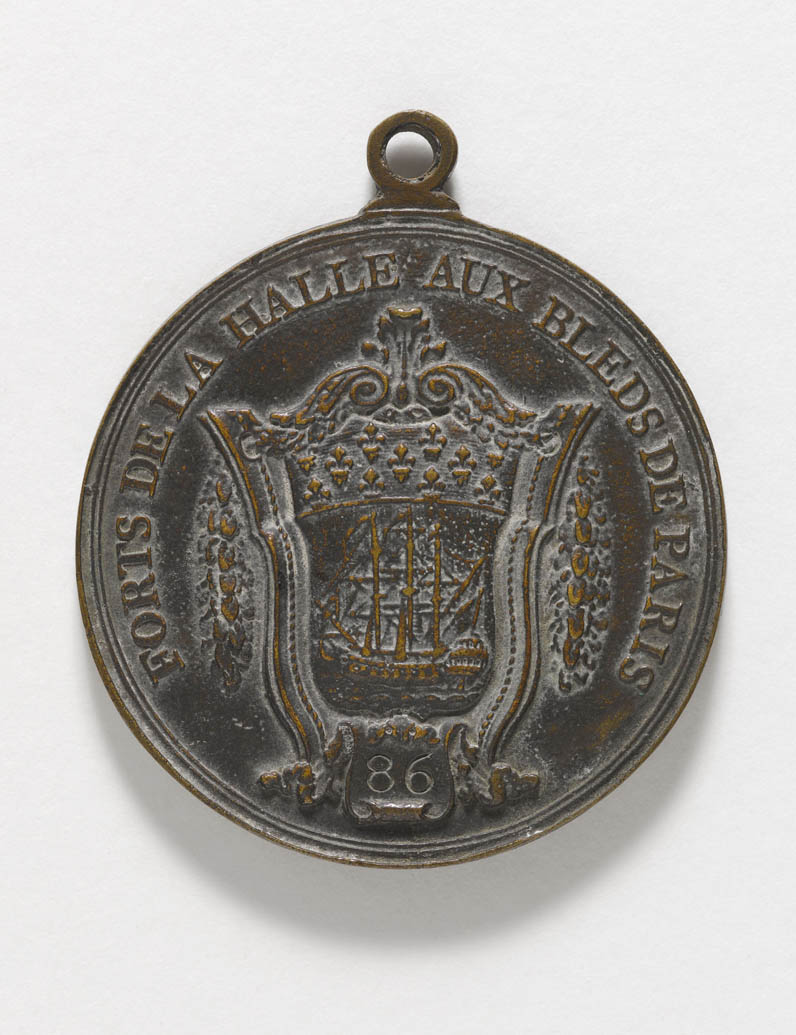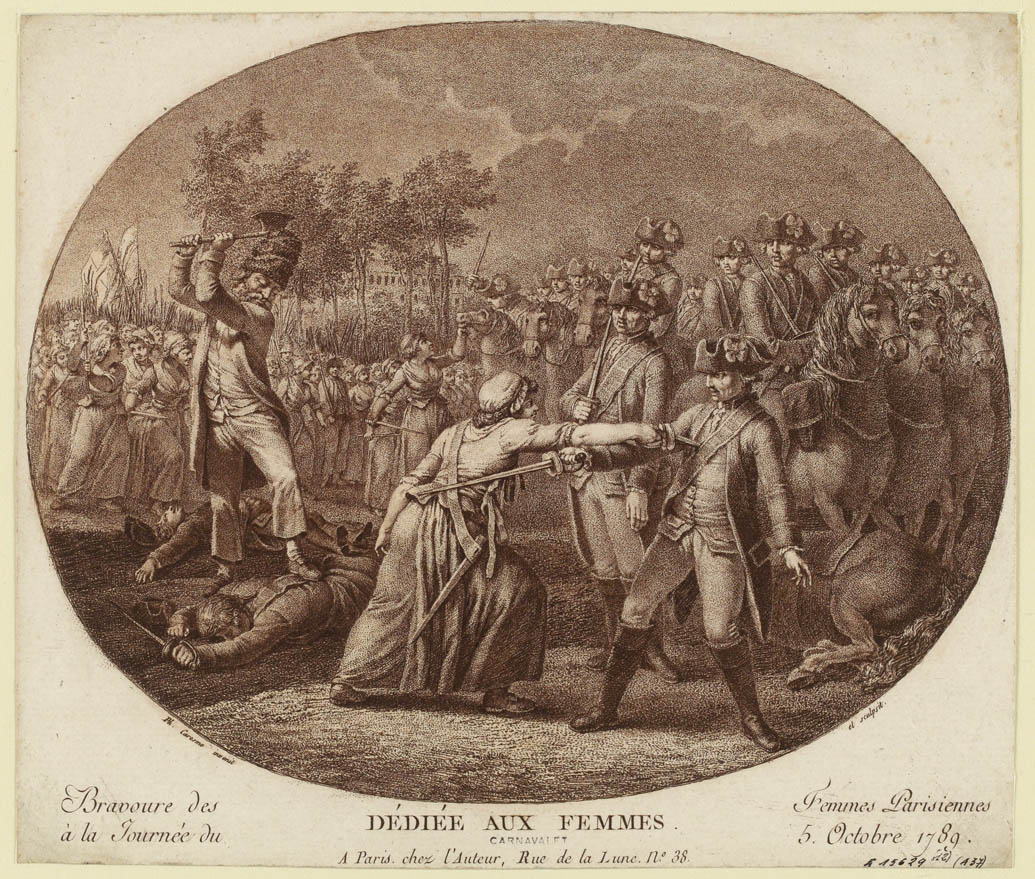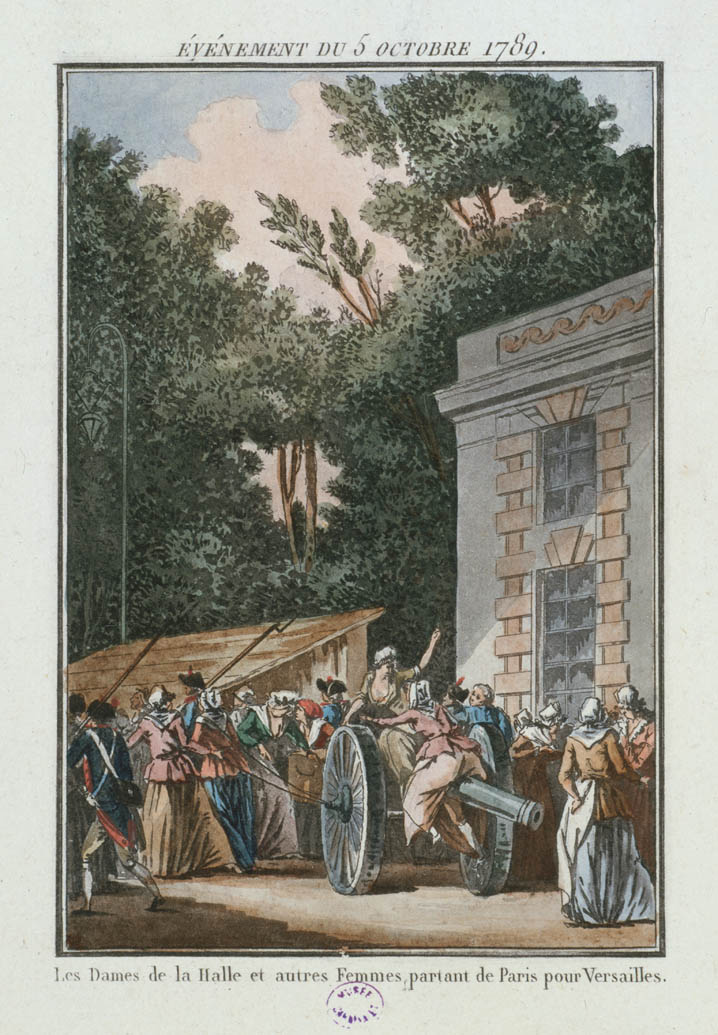The Female Merchants of the Halle of Paris
Today it is difficult to imagine this neighborhood’s working-class atmosphere during the Revolution. In the Halle of Paris, as it was called at that time, a person could find anything here, but especially food: this was where wheat, meat, fish and vegetables arrived from all corners of the kingdom. The markets were organized according to product. In the Halle of wheat, brand new in 1789, grains were sold twice a week, on Wednesdays and Saturdays, from 8 AM to 5 PM in the summer. There were many women here and they were all closely monitored by the police: at a time when people did not have enough to eat, the reigning social climate in the markets was a political issue of the highest order.
Location
ItineraryJardin des Halles: Bourse de Commerce (Commodities Exchange) on the rue de Viarmes (park side)
Suggestion
The Ile de la Cité and the Conciergerie and its neighborhood
The Palais de la Cité and the Conciergerie
To find out more…
The women of the Halle, a strong trade association and their leader
The Halle of Paris was the temple of the “Women of the Halle”: a trade association made up of women who sold fish, grains or vegetables in the heart of the capital. Never at a loss for words, they knew people relied on them: the cost of bread and other essential products was a burning issue. Their leader was respected by the kingdom: she was even invited to Versailles for the birth of the royal children!
The events of October 1789: a turning point for the Revolution
The events of October 1789 are not as well known as the storming of the Bastille. And yet, this was what truly shifted the Revolution. On October 5, 1789, the Women of the Halle led a march to Versailles. They wanted to find the King to ask him to lower the cost of bread. Once there, they pressured deputies and even occupied the National Assembly room. Without ever really expecting or desiring it, they not only succeeded in lowering the price of bread, but also clearing the way for the Revolution: the King agreed to sign the Declaration of the Rights of Men and Male Citizens as well as the first articles of the Constitution, which challenged his authority, and he even resigned himself to follow the women back to Paris and move his entire royal court to the capital.


